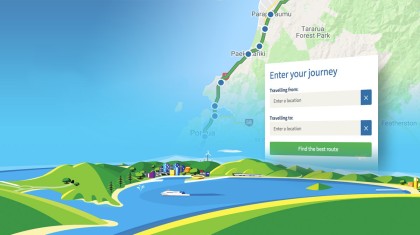The Challenge
Protecting the whenua and our natural resources often involves gradual changes to how we manage activities on land. With this in mind the Government set freshwater regulations for the maximum amount of synthetic nitrogen fertiliser that can be applied to grazed land, with a requirement for dairy farmers to report on their levels of its application.
Synthetic nitrogen fertiliser can leach through soil and into our waterways, with detrimental impacts on the surrounding ecology and our drinking water supplies. Understanding its application provides regional and central government the visibility on these land management practices, enabling them to act to continue to protect our freshwater over time.
Te Uru Kahika (the regional sector) came together, with support from Regional Software Holdings Limited (RSHL), the fertiliser industry and MadeCurious, to develop a single portal for reporting on synthetic nitrogen fertiliser application.
With the range of upcoming legislative reform surrounding fresh water and environmental regulation, the sector needed to quickly spin up a solution that was affordable whilst balancing the need to safely operate over a short term life-span (2-3 years).
The Solution
The fertiliser industry already has tools to report on farm fertiliser application. However, Te Uru Kahika also needed to enable direct reporting from those farmers not registered with these tools. A solution was also needed quickly to meet the government reporting deadlines.
Our tech platform enabled the rapid delivery of a system that made it easy for farmers to provide data on the fertiliser application across their property. This data is sent to a central repository hosted by Environment Canterbury and combined with the data provided from the fertiliser industry tools via API. This enables anonymised reports to be compiled for each regional council and national reporting for the Ministry for the Environment.
This solution means farmers only need to provide their data once, via a system that best suits them. These efficiency gains also extend to the regional sector, where a standardised national data structure means less manual reporting effort by council staff.

It felt seamless to work with MadeCurious given the work they have previously done with the regional sector. They were really responsive to our requests yet also prepared to offer alternative solutions that were practical and most importantly could be implemented with our very tight timeframes.
The tool was stood up very quickly – we really appreciated their ability to navigate us through getting something up and running in a way that allows it to be refined over time.
A Focus On
-
Reducing the burden on farmers to provide the necessary data
-
Integration with existing industry tools to reduce duplicate effort
-
Improving reporting efficiency both regionally and nationally
-
Collaborate
Working with IT specialists from across Te Uru Kahika and industry to deliver a unified solution.
-
Design
Rapidly constructing a prototype of the farmer-facing solution using the Media Suite Design System.
-
Develop
Utilising our technology platform the prototype was quickly turned into working software in the matter of weeks.
-
Support
Working with Environment Canterbury IT specialists to ensure support across all aspects of the solution.

Technically Speaking
Our design system and msAF tech platform enabled us to really hit the ground running on this project, which was crucial given the tight timeframes.
For example, our Keycloak authentication module enabled us to rapidly configure the user registration and self-management aspects of the solution. The front-end React components, modelled on our design system, provided the developers the flexibility to quickly build out the forms to match Environment Canterbury’s API structure.






